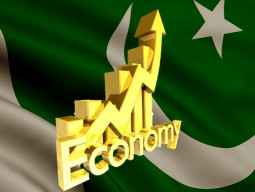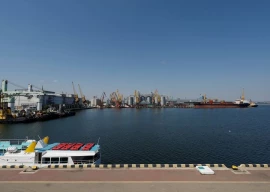
Moody’s conclusions are contained in its latest credit analysis titled “Government of Pakistan - B3 Stable”, which looks at the country’s credit profile in terms of economic strength (assessed as moderate), institutional strength (very low), fiscal strength (very low) and susceptibility to event risk (high).
Pakistan's economy reaches pivotal point, medium term outlook positive: IMF
These represent the four main analytic factors in Moody’s sovereign bond ratings methodology. The analysis constitutes an annual update to investors and is not a rating action.
Moody’s assessment of Pakistan’s moderate economic strength encompasses the sovereign’s very low per capita income and the large size of its economy.
Economic output, previously anemic, has picked up over recent years and is now rising at a relatively healthy pace, the agency said. The implementation of the China-Pakistan Economic Corridor will likely support the activity further, and in concert with energy sector reforms, will improve the operating environment for investment, it added.
Moody’s assessment of institutional strength as very low reflects Pakistan’s weak but improving rankings on governance survey indices, specifically the World Bank’s Worldwide Governance Indicators. It also takes into account the central bank’s management of inflation and monetary policy, and progress on reforms under the ongoing IMF programme.
World Bank projects: Pakistan’s economic growth at 4.4%
Moody’s very low assessment of Pakistan’s fiscal strength reflects the country’s moderately large debt burden and weak revenue base, which lower the debt affordability relative to peers.
The share of foreign currency debt to total general government debt has considerably declined in the last five years. But such borrowing still comprises about a third of total public debt, leaving government finances exposed in the event of exchange rate depreciation or financial market volatility.
Moody’s assessment of Pakistan’s vulnerability to event risks as high is driven by political risks, both domestic and geopolitical.
The government’s relatively large annual borrowing needs, in particular owing to large rollover requirements, are also a constraint, Moody’s said.
Published in The Express Tribune, April 28th, 2016.
Like Business on Facebook, follow @TribuneBiz on Twitter to stay informed and join in the conversation.
1732762837-0/Taylor-(3)1732762837-0-405x300.webp)
















COMMENTS (17)
Comments are moderated and generally will be posted if they are on-topic and not abusive.
For more information, please see our Comments FAQ